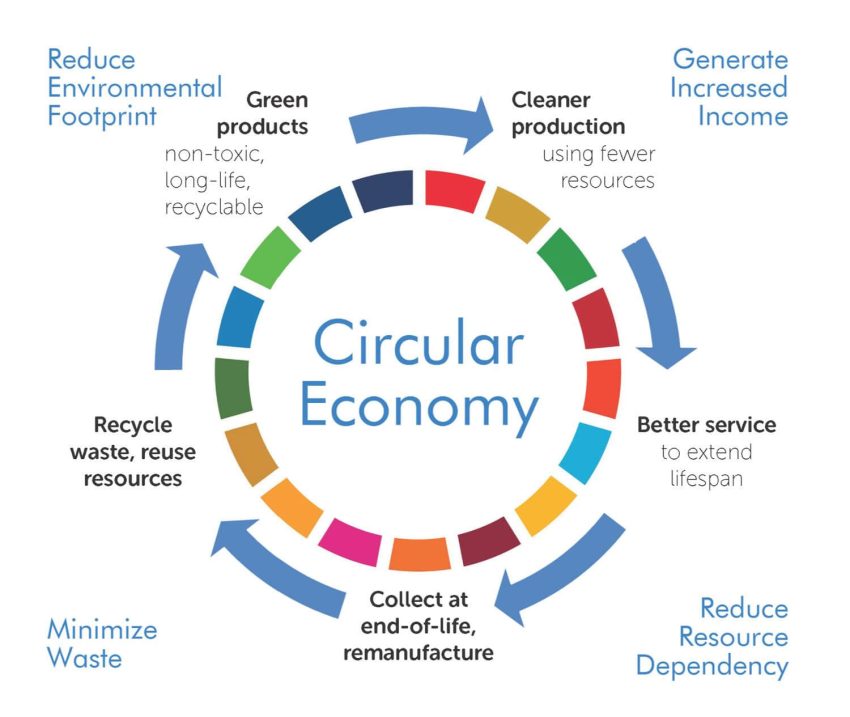Resource management is undergoing a profound transformation in today’s rapidly changing world. We find ourselves at the cusp of a new era driven by sustainability, efficiency, and innovation. The circular economy, a paradigm shift in resource management, has emerged as a powerful force shaping our approach to production, consumption, and waste. This comprehensive article delves deep into the circular economy, exploring its principles, impact, and remarkable potential for a more sustainable future.
Understanding the Circular Economy
What Is the Circular Economy?
The circular economy is not just a buzzword but a transformative resource management approach. At its core, it aims to minimize waste and maximize resource efficiency by closing the loop of product life cycles. Unlike the traditional linear economy, which follows the “take, make, dispose” model, the circular economy strives to create a closed-loop system where resources are continuously reused, refurbished, and recycled.
Key Principles of the Circular Economy
- Design for Longevity: Products are designed with durability in mind, ensuring they have a longer lifespan reducing the need for frequent replacements.
- Reuse and Repair: Emphasis is placed on repairing and refurbishing products, extending their usability rather than discarding them.
- Recycle and Remanufacture: Materials from end-of-life products are recycled to create new products, reducing the demand for virgin resources.
- Resource Efficiency: Maximizing resource utilization and minimizing waste generation is a fundamental goal.
The Economic and Environmental Benefits
The circular economy is not just an eco-conscious ideal; it offers tangible benefits for businesses, communities, and the environment.
1. Economic Growth: Transitioning to a circular economy can stimulate economic growth by creating new business opportunities in recycling, refurbishment, and sustainable product design.
2. Reduced Environmental Impact: The circular economy significantly reduces the environmental footprint by curbing resource consumption and waste generation, leading to a greener planet.
3. Enhanced Resilience: Businesses adopting circular practices are often more resilient to resource shortages and price fluctuations, ensuring stability in the face of challenges.
Circular Economy in Action
1. Sustainable Fashion
The fashion industry, notorious for its high environmental impact, is transforming. Circular fashion brands are emerging, producing clothing designed for longevity, encouraging clothing swaps, and recycling old garments into new ones. This shift not only reduces waste but also promotes sustainable consumer behavior.

2. Electronics Recycling
Electronic waste (e-waste) is a growing concern in the age of rapid technological advancements. Circular economy initiatives encourage the recycling and refurbishing electronic devices, reducing the burden on landfills and conserving valuable resources.
3. Zero-Waste Packaging
Circular thinking has infiltrated the packaging industry, with companies developing innovative, eco-friendly solutions. These initiatives aim to minimize single-use packaging waste, from reusable containers to biodegradable materials.
Challenges and the Path Forward
While the circular economy holds immense promise, it has challenges. Transitioning from a linear to a circular model requires significant research, development, and infrastructure investments. Additionally, consumer behavior and attitudes toward ownership and disposability must evolve.
Collaboration among governments, businesses, and individuals is crucial to advance the circular economy agenda. Policymakers can incentivize circular practices through regulations and tax incentives, while businesses can champion sustainable product design and circular supply chains. As consumers, our choices and demand for circular products are pivotal in driving this transformation.
Conclusion
The circular economy is more than a trend; it’s a fundamental resource management shift. Its sustainability, resource efficiency, and waste reduction principles offer a pathway to a more prosperous and environmentally friendly future. As we embrace the circular economy, we can look forward to a world where waste is minimized, resources are optimized, and sustainability reigns supreme.
